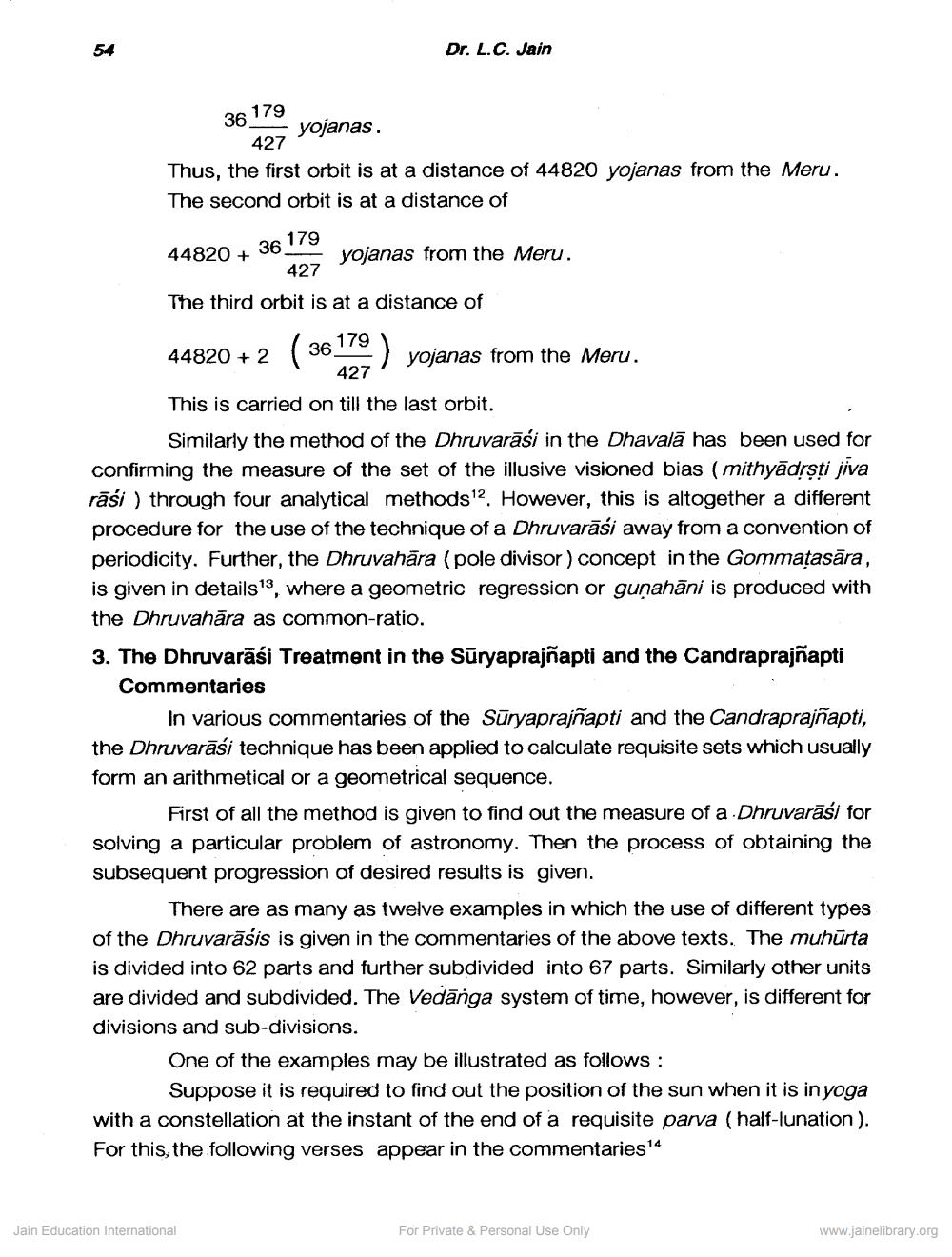________________
Dr. L.C. Jain
36 179
yojanas.
Thus, the first orbit is at a distance of 44820 yojanas from the Meru. The second orbit is at a distance of
427
44820 + 36 yojanas from the Meru. The third orbit is at a distance of 44820 +2 ( 360 ) yojanas from the Meru.
179
427
This is carried on till the last orbit.
Similarly the method of the Dhruvarāśi in the Dhavalā has been used for confirming the measure of the set of the illusive visioned bias (mithyādrsti jiva rāśi ) through four analytical methods. However, this is altogether a different procedure for the use of the technique of a Dhruvarāśi away from a convention of periodicity. Further, the Dhruvahāra (pole divisor) concept in the Gommațasāra, is given in details 13, where a geometric regression or gunahāni is produced with the Dhruvahāra as common-ratio. 3. The Dhruvarāśi Treatment in the Süryaprajñapti and the Candraprajñapti Commentaries
In various commentaries of the Sūryaprajñapti and the Candraprajñapti, the Dhruvarāśi technique has been applied to calculate requisite sets which usually form an arithmetical or a geometrical sequence.
First of all the method is given to find out the measure of a Dhruvarāśi for solving a particular problem of astronomy. Then the process of obtaining the subsequent progression of desired results is given.
There are as many as twelve examples in which the use of different types of the Dhruvarāsis is given in the commentaries of the above texts. The muhurta is divided into 62 parts and further subdivided into 67 parts. Similarly other units are divided and subdivided. The Vedānga system of time, however, is different for divisions and sub-divisions.
One of the examples may be illustrated as follows:
Suppose it is required to find out the position of the sun when it is in yoga with a constellation at the instant of the end of a requisite parva (half-lunation). For this, the following verses appear in the commentaries 14
Det er
Jain Education International
For Private & Personal Use Only
www.jainelibrary.org




